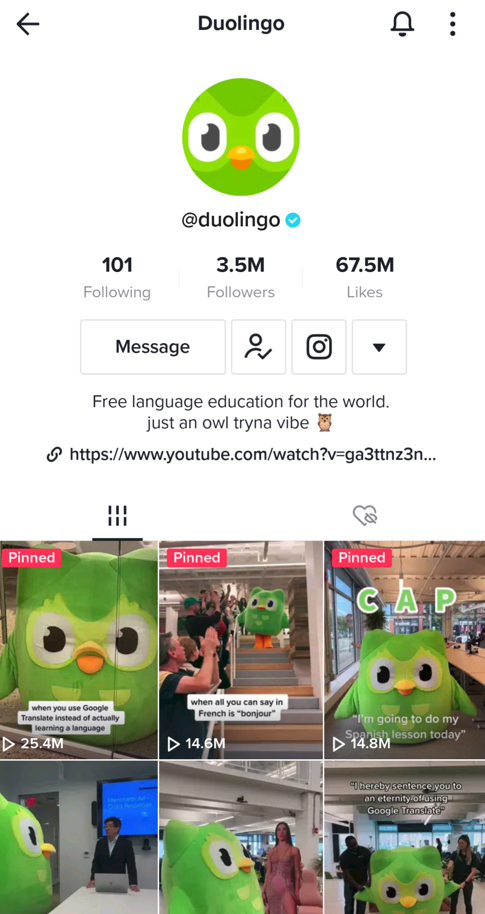8 of the Toughest Social Media Marketing Challenges (And How to Overcome Them)
Ready to tackle the biggest social media challenges?
If you’re struggling to grow your brand’s social presence, you’re certainly not alone.
Right now the competition among industries is fierce. Pair that with a new wave of networks and high expectations from your followers.
Food for thought: 71% of consumers are spending more time on social media. This activity shows the importance of making your presence known as well as standing apart from the competitors.
In this guide, we break down the eight most common social media marketing challenges brands are facing today. For each obstacle, we’ll connect you with actionable next steps that can help.
1. Falling Engagement Rates and Fewer Post Interactions
It’s no secret that organic engagement on social media has been on a downward trend.
More users and brands on the network means you are literally competing for the attention of customers and followers. After all, there are only so many interactions to “go around”.
And while the phenomenon of falling engagement was primarily a problem on Facebook and Twitter, the trend is affecting brands on Instagram as well.
In fact, recent research from rival IQ states that Instagram engagement rates have dropped 30% on a yearly basis.

We will bite: Overcoming algorithms is one of the most difficult challenges of social media marketing. Earning reach and interaction can be an uphill battle if you’re not running paid promotions alongside organic content. That said, it is not an impossible battle.
Solution:
- Measure your top-performing posts to understand what drives the most interactions. Try to find common threads among these posts (think: timing, content topic, post type, formatting, voice).
- Pay attention to content that taps into your existing followers, customers, and community. This may include question-based content, user-generated content campaigns, and responding to shoutouts and comments.
- Consider collaborating with influencers and brands as a way to increase your reach and encourage more brand mentions.
2. Standing Against Established Social Competitors
Feel like you don’t have much of a voice?
As mentioned earlier, most industries are full of competition. Look no further than the beauty space as proof, with brands and advocates eager to show the products in action.
From old brands to established players in your industry, claiming yourself as an emerging company is a tall order.
Our advice? Focus on establishing your own identity and community versus obsessing over others. Comparing follower count and engagement is easy but doing you or your followers a favor.
Remember: A small, thriving community is more valuable than vanity metrics.
Solution:
- Build your primary promotional strategy to attract customers (think: user-generated content, answer questions, comments, and tagging)
- Developing a distinct brand voice – Don’t discount the power of personality (think: humor, credibility) as a way to stand out.
- Activate employees to promote your branded content and reach beyond your account.
3. Time lost by juggling multiple social platforms
message. Notifications. Content deadline. The list goes on and on.
If you’re trying to build a presence across multiple platforms, lost productivity is probably one of your biggest social media challenges.
Multi-platform presence involves cross-posting and responding to comments across channels, however, doing so without a strategy is a recipe for burnout.
There’s only so much time in the day, so it’s important to allocate your time without sacrificing customer relationships or ruining your own schedule.
That’s where tools like Sprouts Smart Inbox come in handy, so you can consolidate and collaborate on all channels in one place.

Solution:
- Define your “priority” network and focus most of your efforts there. Ask yourself: where do your most meaningful conversations take place? Where are you seeing the most growth? Which platform is most tied to your business goals?
- Embrace social media tools like Sprout to strengthen your social presence and assets. Doing so will take less time between networks and help streamline your workflow.
- Consider outsourcing or sharing responsibilities to your marketing team as needed.
4. When Key Stakeholders Don’t Understand Social Media
Social media is no longer the “shiny new toy”.
That said, some stakeholders or higher-ups may not see the immediate value of investing in social as a priority channel.
From lead generation to nurturing customers and beyond, the role of social in winning new business is really well documented. Heck, 4 of the 5 most budget-oriented marketing priorities for 2022 are directly related to social media.

Creating a business case for social media is a common challenge associated with social media marketing but it doesn’t have to be.
Although justifying social media to your boss may involve factors beyond your control (think: budget, personnel), linking your organization’s presence to business practices, bottom line and performance should be a priority. Doing so not only helps reinforce the importance of your role but also helps keep future purchases from coworkers and higher-ups.
Solution:
- Document important social media KPIs by understanding how your social presence impacts business goals, including brand awareness, lead generation, customer nurturing and sales.
- Highlight relevant metrics that have moved the needle in the past year to help you reach those goals (think: traffic, mentions, reach, engagement).
- Conduct competitive analysis and market research to drive home the importance of having a strong social presence for your respective industry.
5. Minimal communication between departments
Piggybacking on the above point, the importance of buy-ins in your organization is critical for growing on social media.
Regardless of the power of collaboration between departments like PR, Product or Demand Gen, we’ve seen firsthand how many teams remain unhappy. The graph below shows the teams social marketers interact with the most.

Sharing your data and insights should not be a burden and should not be a time-consuming process. In fact, doing so is worthwhile for empowering yourself and your co-workers.
That’s because collaboration goes hand-in-hand with creating better campaigns and reducing second guessing.
For example, consider how your sales team or product team see the ongoing impact of your content marketing and social presence. With their insight, you can spend more time on activities that help your customers and win over prospects.
Solution:
- Set up regular meetings and check-ins to review metrics and explore opportunities for collaboration across teams.
- Consider how using a team chat tool like Slack can also provide opportunities for sharing insights.
- If possible, assess your CRM data to better understand how your company’s social presence affects your marketing and sales funnels.
6. You’re Out of Creative Content Ideas
Coming up with fresh content ideas is one of the most common social media challenges and perhaps the most frustrating as well.
This is because your social media presence never really stops growing. Whether a campaign fails or gets a lot of attention from followers, you are still expected to follow up and keep the good content flowing.
Social media success stories like Duolingo on TikTok are a great example of how creative content can take your brand to new heights.

Again, you may not focus on what your competitors or legacy brands are doing. Creativity often comes in waves and the same is true for social marketers. We recommend being proactive about coming up with ideas through strategic, ongoing brainstorming.
Solution:
- Use social listening tools to uncover conversations and content that your target audience is currently discussing.
- Try trendspotting to get started before the social media movements and frenzy are blown up.
- Collaborate with creators or brand advocates who have recently been successful in driving engagement. What can you learn from them?
7. Responding to Call-outs and Crises
Social media has become a popular channel for customer service and support.
Likewise, it is a popular place to keep your customers in the loop in case of distress or hiccups with your product or service.

However, if you want to keep your customers happy then simply pushing out announcements is not enough.
In addition to interacting with customers and leads, speeding up your response times is essential to keeping customers happy. Swift responses have been positive.

In short, brands need to consider How They answer questions, call-outs, and everything in between if they want to maintain a positive online reputation.
Solution:
- Develop a specific social media crisis plan to handle severe reaction incidents without becoming overwhelmed.
- Learn about your customers’ most common objections, issues, and concerns so they can anticipate them in your answers.
- Make it a point to personalize your responses to customers (even when you’re using messaging templates).
8. Lack of development, direction or strategy
Let’s say you’re stuck when it comes to what you “should” do on social.
Maybe you feel like your brand is just on autopilot.
This is something that calls for an actual social media marketing strategy, rather than posting “just because”. It never hurts to go back to basics to assess the big-picture purpose of your appearance to guide it in the future.
Solution:
- Again, discuss goals and expectations with your managers and higher-ups to make sure everyone is on the same page. Double check that you are focusing on the appropriate metrics and KPIs.
- Find a schedule and publication frequency. Doing so helps you avoid posting randomly. When in doubt, establish a schedule based on the best times to post on social media.
- Consider conducting an audit to assess what is working and what is not in terms of materials, timing, etc. Analyze your top performing content and engagement rates and draw conclusions from there (see below). To make sure you’re growing, set performance benchmarks.

Which social media challenges do you need the most help with?
Building an impressive social presence doesn’t happen by accident.
If you’re facing obstacles or don’t know what to do next, don’t panic. It happens!
What matters is that you have a proactive plan in place to advance your presence. Addressing the social media challenges above is not something you can be shy about.
Good News? We have free social media templates to hone your strategy and make conflicts a thing of the past.
Post 8 of the toughest social media marketing challenges (and how to overcome them) first appeared on Sprout Social.





